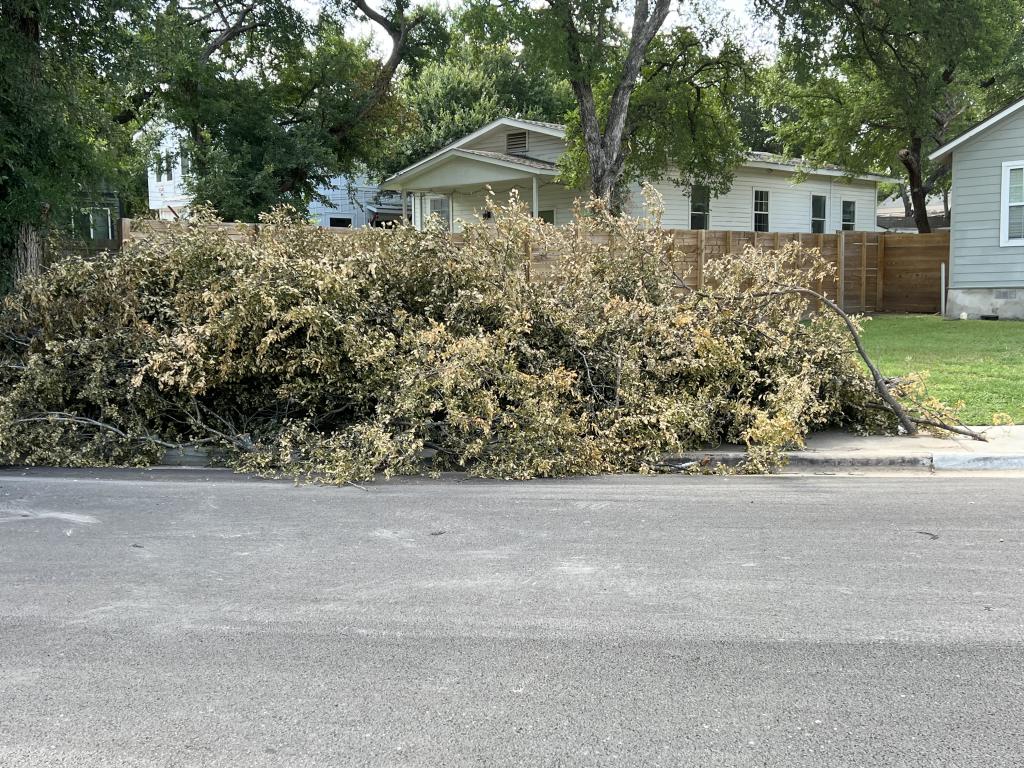Protect your home through regular brush removal

By Jeff Patterson
Recent weather events have demonstrated the importance of trimming and removing overgrown vegetation and brush from properties to reduce the risks of flooding, wildfires and storm damage.
Debris obstructing water flow in drainage and waterways increases flooding risks after heavy rainfall. Alternately, droughts dry out vegetation that can catch fire and quickly destroy entire neighborhoods.
Fortunately, the City of Austin makes it easy for residential customers to dispose of tree limbs and branches.
Small Brush
Yard trimmings and small branches (less than five feet in length) can be set out with your weekly composting collection. If you have more material than fits into the green cart with the lid closed, you can set out up to 15 extra items beside the cart. Additional items include lawn and leaf bags, reusable containers and small branch piles.
Large Brush
For larger brush, customers can schedule an on-demand collection through the Austin Recycles app, at austintexas.gov/myschedule or by calling 3-1-1 (512-974-2000). Crews will haul away the material, which will be turned into mulch or composted into Dillo Dirt. Each residential service address can schedule up to three collections per calendar year. For more information on scheduling on-demand brush collection, visit austintexas.gov/ondemand.
Austin and Travis County residents can also drop off yard trimmings and large brush at Austin Water’s Hornsby Bend Biosolids Management Plant. The facility is open 8 a.m.– 3 p.m., Monday through Saturday, and no appointment is necessary. Large brush is mulched or composted into Dillo Dirt. The Recycle and Reuse Drop-off Center also offers free mulch to the community.
Tips for safe and effective brush removal
- Survey your landscape to identify areas with dense brush, overgrown vegetation, and debris accumulations that need attention.
- Create a strategy for removing the materials, considering the type and amount of waste to be handled.
- Do not toss limbs or other yard debris into creeks, as this can cause future flooding.
- Wear protective gear like gloves, safety glasses and sturdy shoes. Learn proper lifting techniques for heavy objects.
- Remove leaves and debris from gutters and roofs regularly, install ember-proof screens on chimneys and vents and consider fire-resistant building materials and landscaping techniques.
- Start with larger trees and work towards smaller shrubs and perennials. Prune trees, keeping branches at least 6-10 feet off the ground and away from your home.
- Report obstacles that could prevent drainage or water flow (like fallen trees, debris, build-up of rock or silt, or overgrown vegetation) by calling 3-1-1 or 512-974-2000 or visiting Austin 3-1-1.

